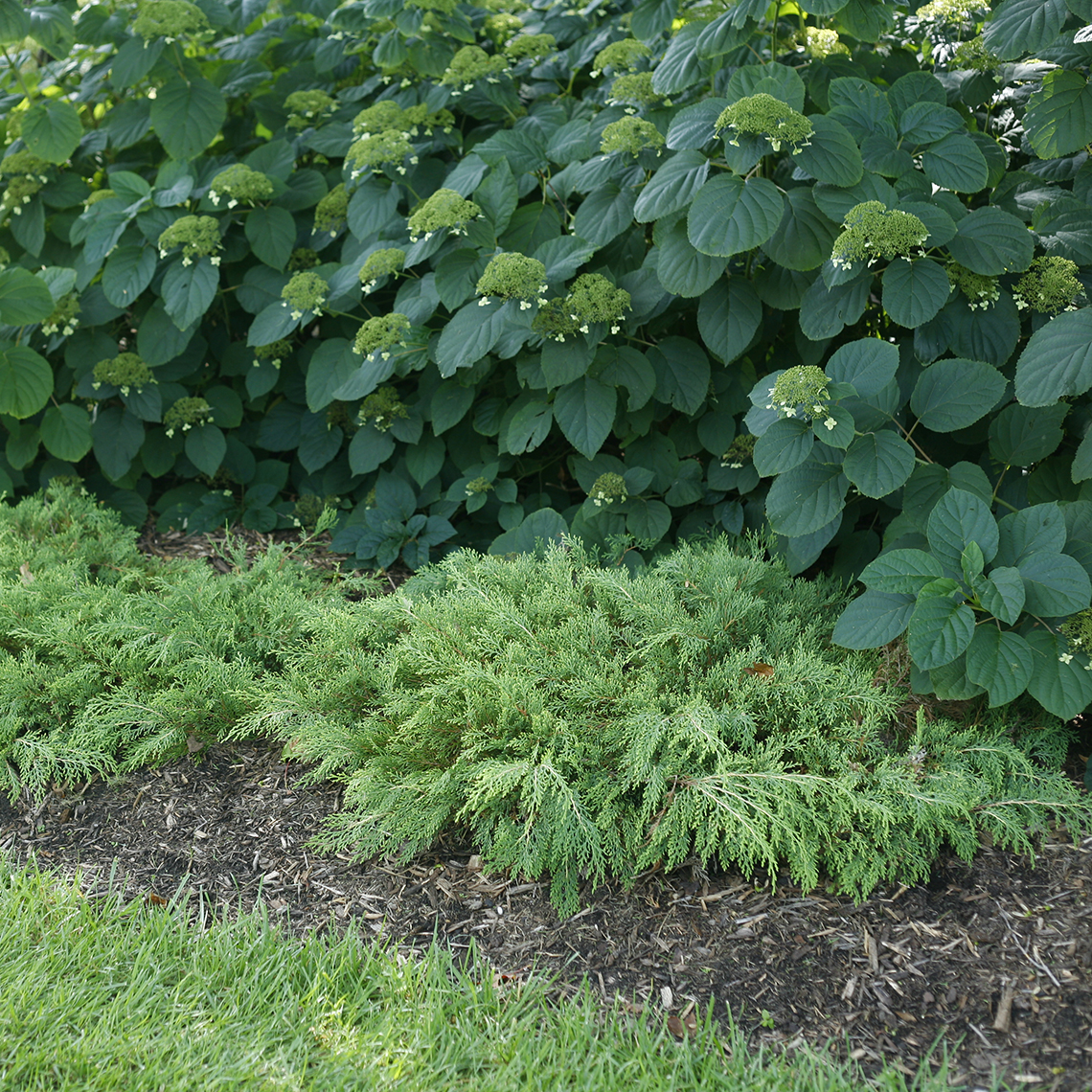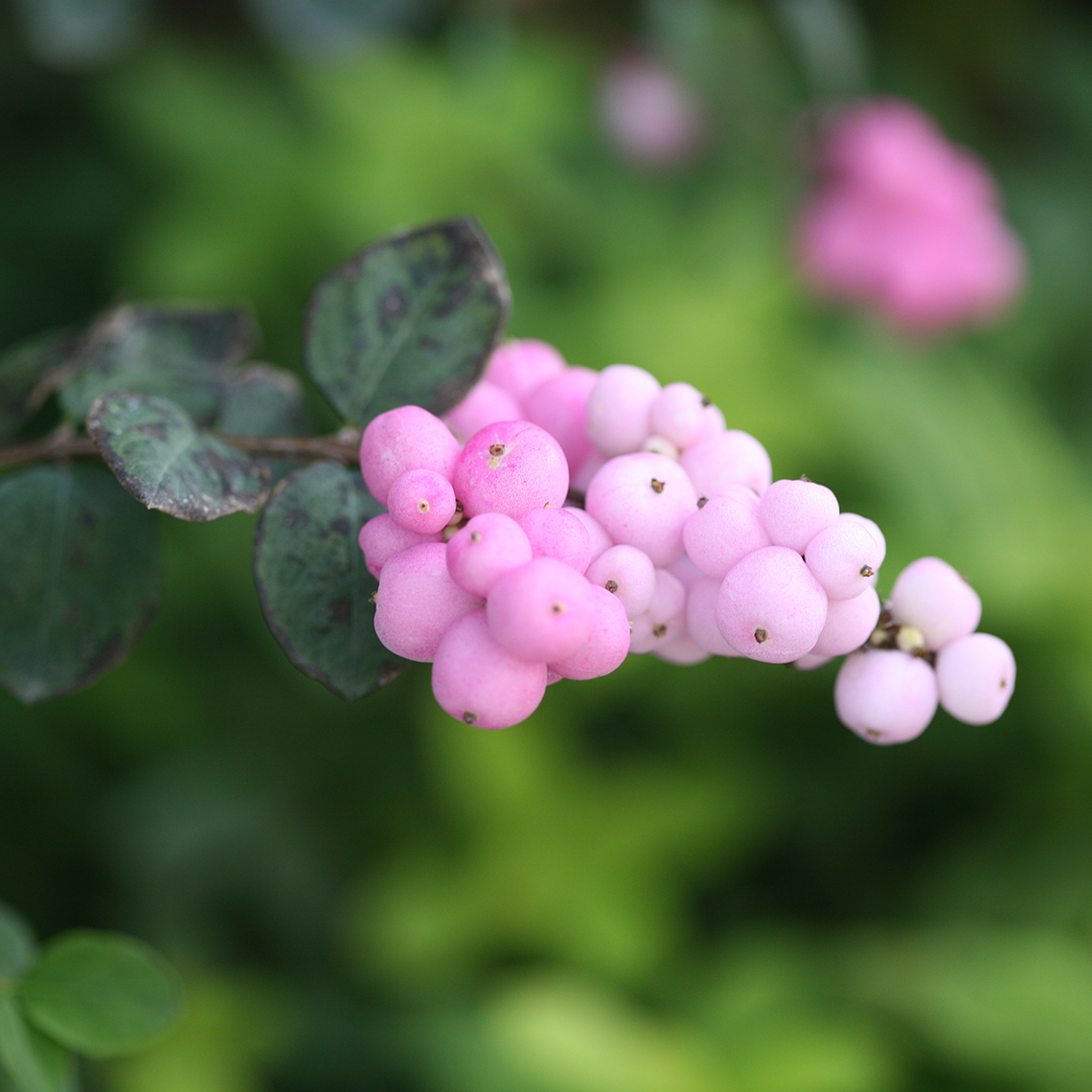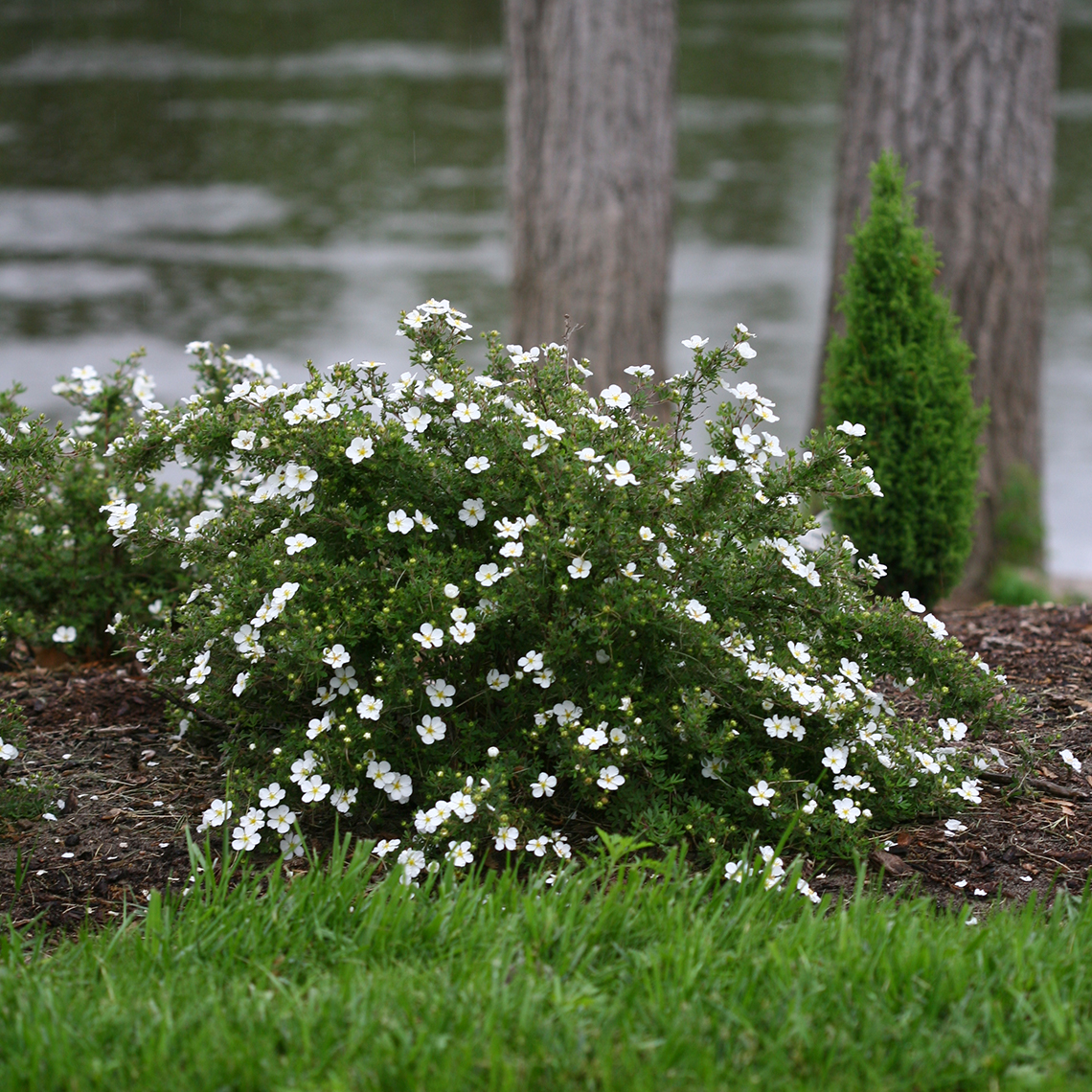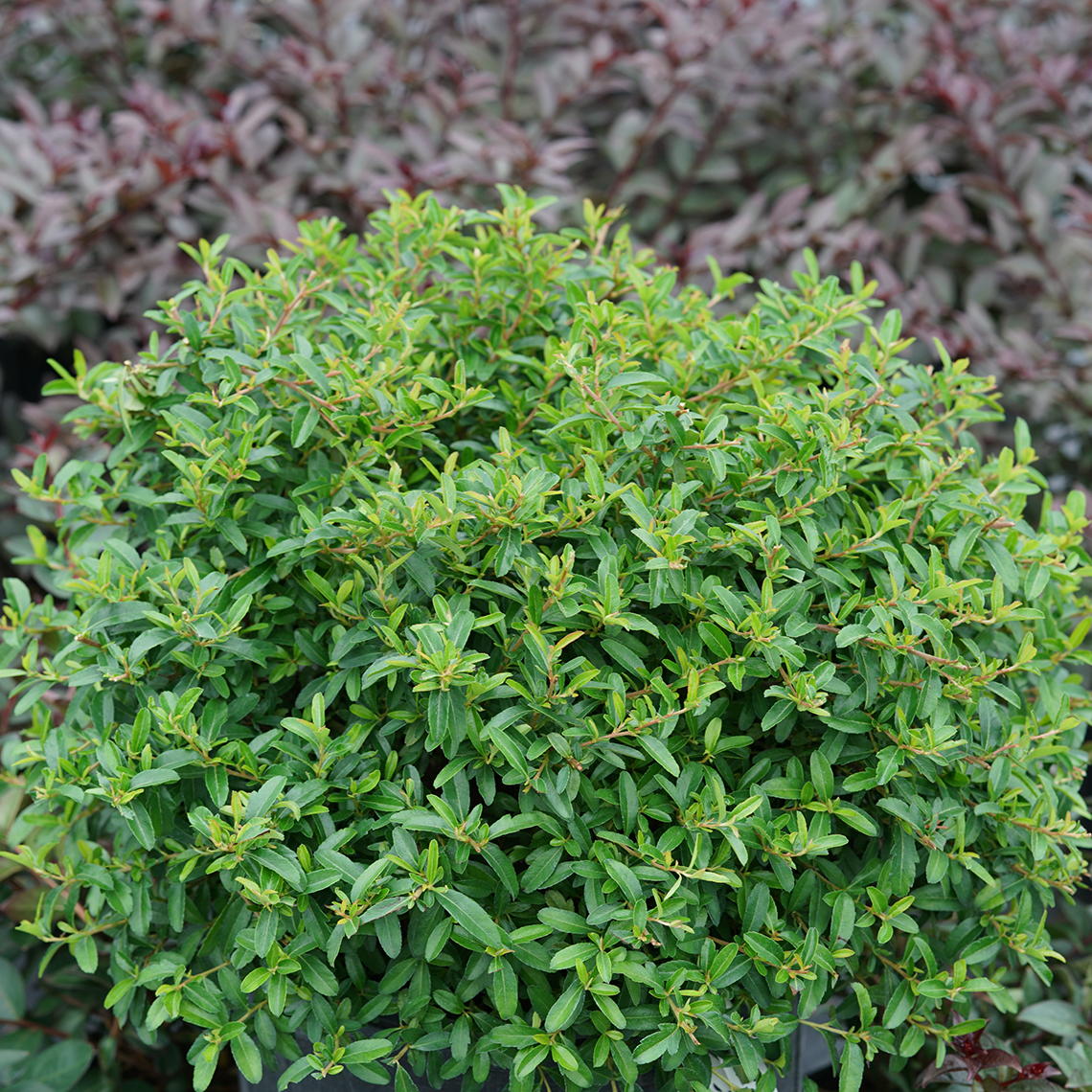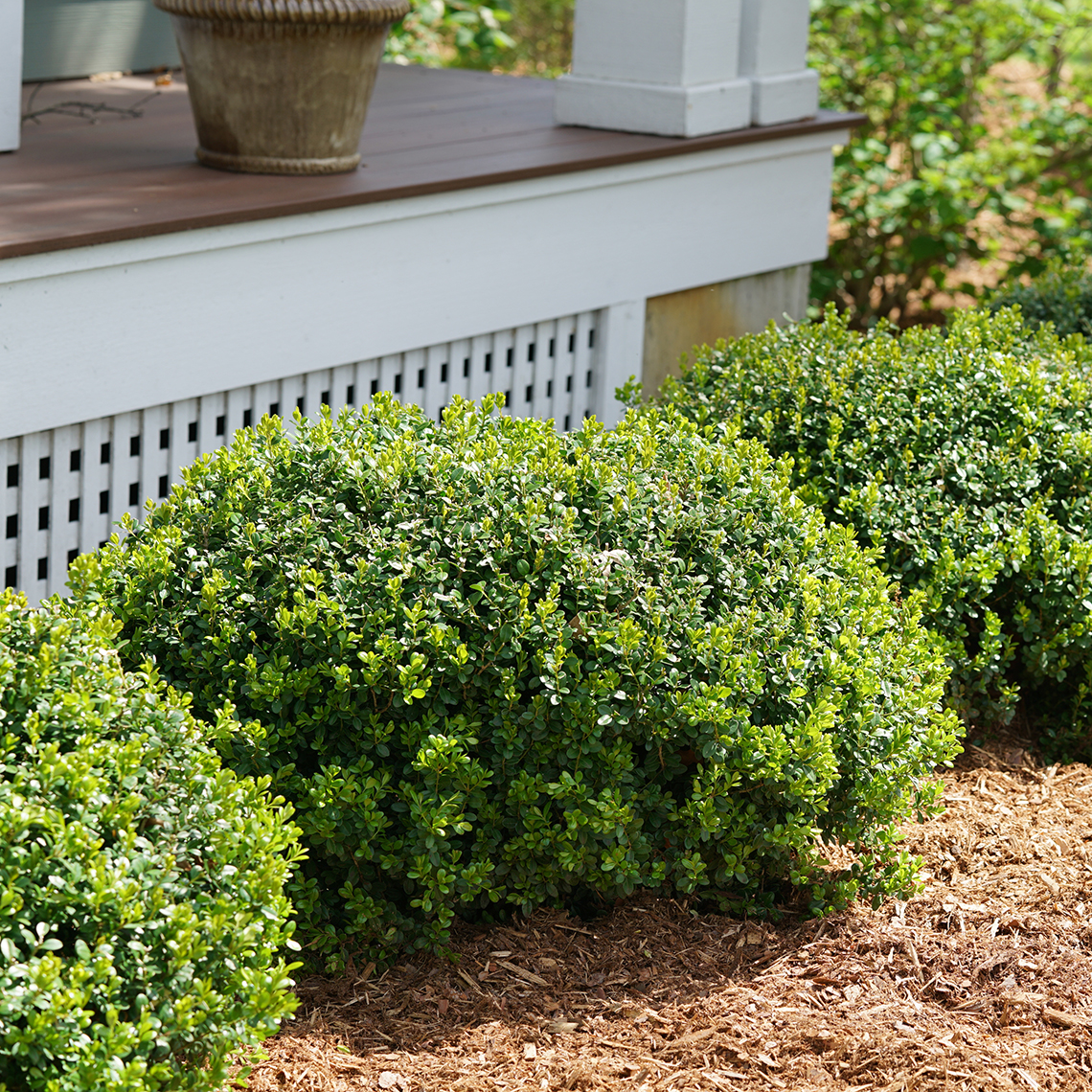Clicking the following controls will change the main image displayed above.
Cotoneaster apiculatus
Cotoneaster - Cranberry
Cotoneaster apiculatus
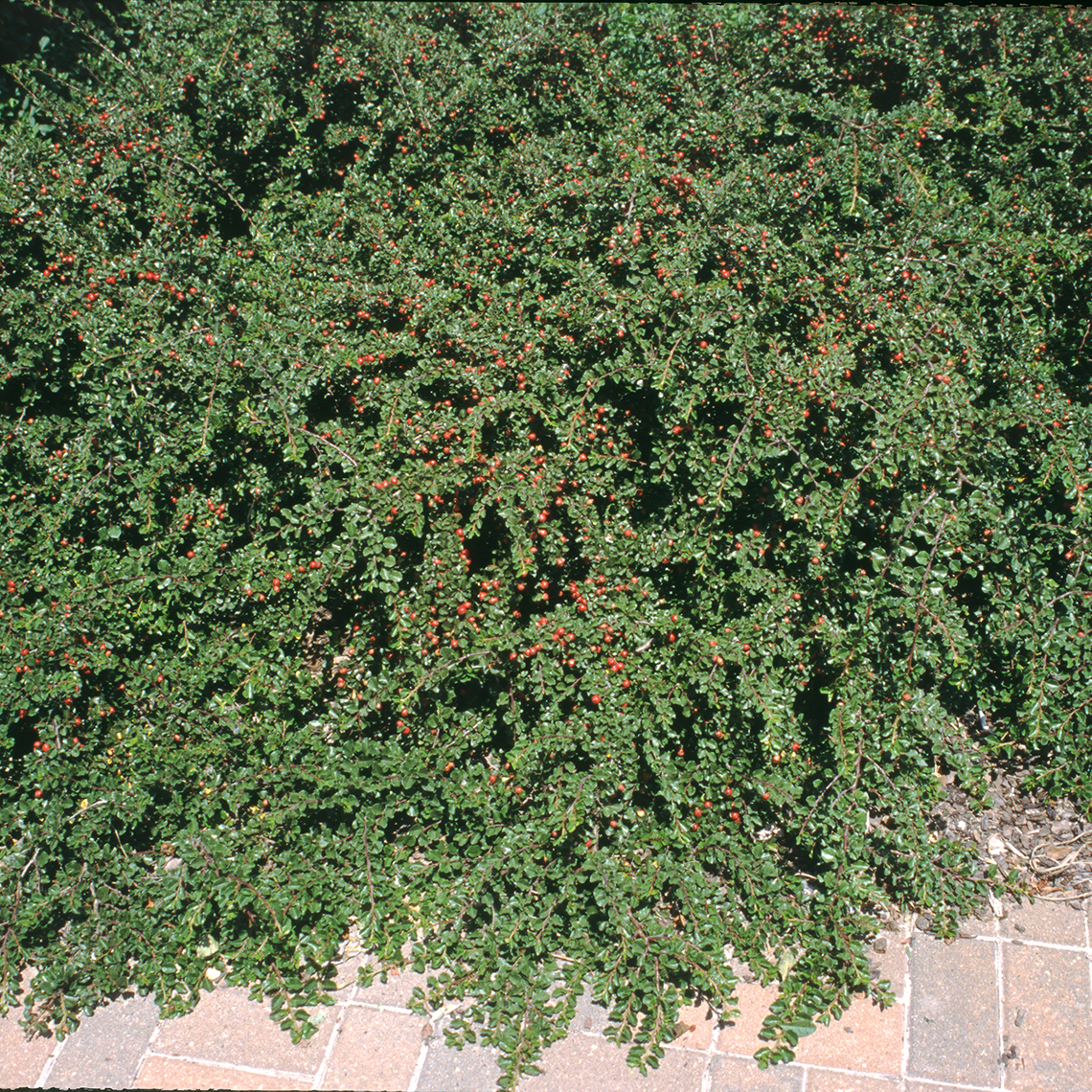 "}
"}
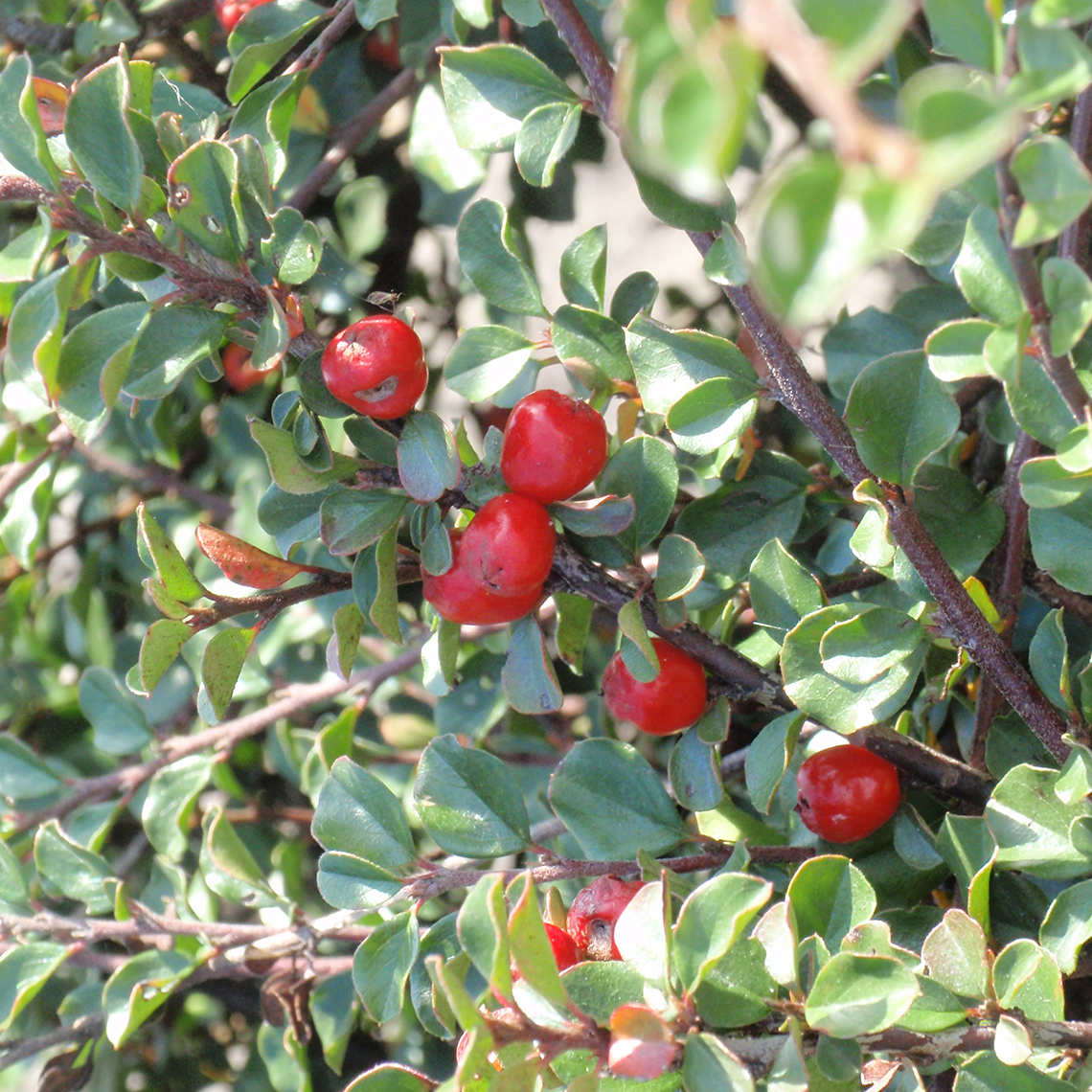
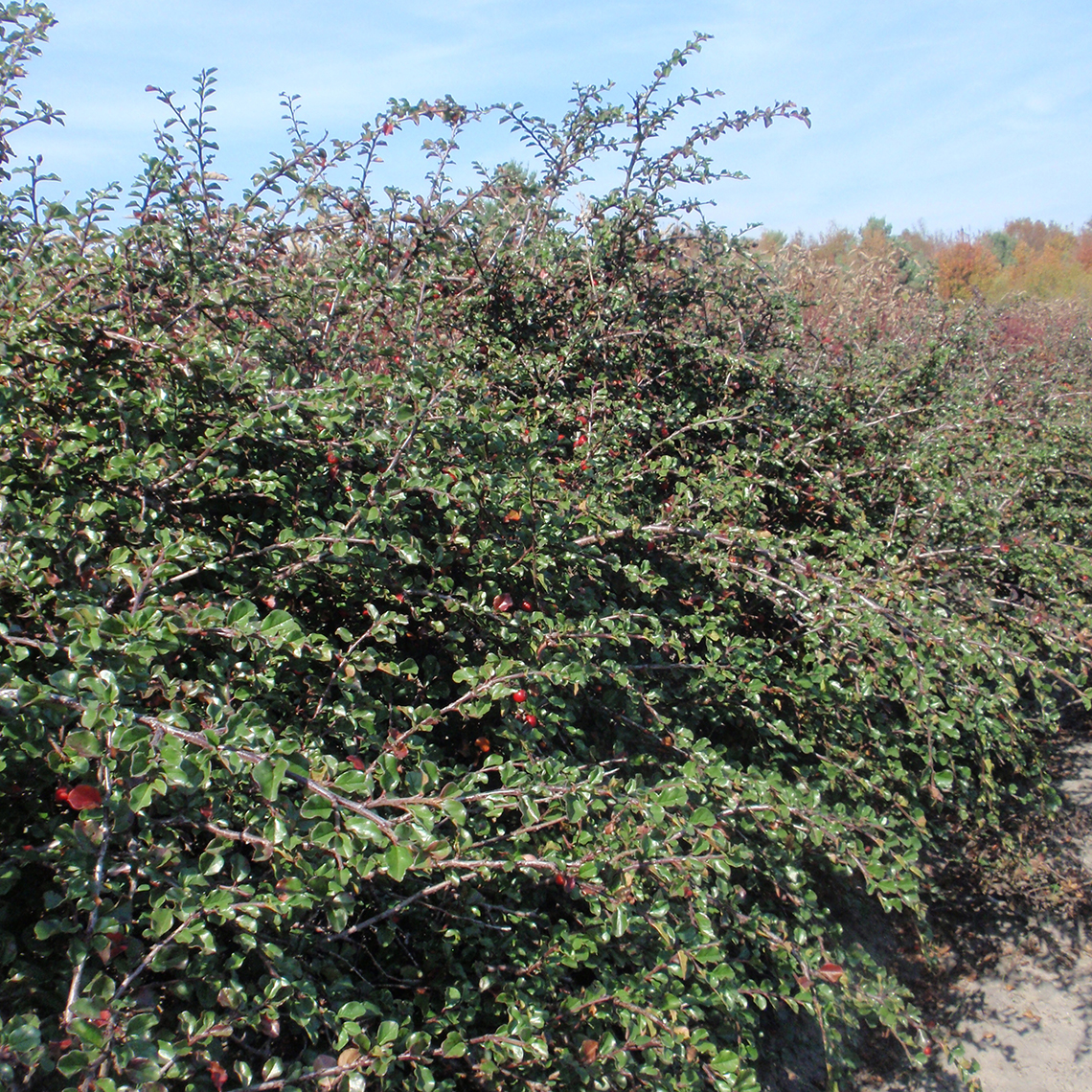
- Unique texture
- Three-season interest
- Versatile habit
- Description
A very popular plant for landscaping, Cotoneaster apiculatus earned the common name "cranberry cotoneaster" from the bright red berries it sports late summer through fall. Small pink flowers in spring and glossy foliage through summer add to its interest. The low spreading habit makes it good for covering large areas, including banks and slopes that need erosion and weed control.
- USDA Zone
- 4 - 7 (-30°F/-34°C)
- Exposure
- Full sun, Part sun
- Height
- 1 - 3'
- Width
- 3 - 6'
- Finish Time
- 1 season
- Type
- Deciduous
- Bloom Time
- Spring
- Flower Color
- Pink
- Foliage Color
- Green
General Care
Soil
Tolerates sandy soils, clay soils, and anythiing in between. Not finicky about fertility or pH.Pruning
Seldom needed, but may be pruned selectively in early spring. Blooms on old wood, so pruning will remove flowers and subsequent fruiting.Uses
Cotoneaster offers a lot of versatility in the garden - it's a peerless groundcover, edging plant, or rock garden plant. It's also useful for planting on walls to accentuate its strongly cascading habit.Growing Tips
This cotoneaster struggles in hot, humid climates. Provide good light and air circulation to ensure a healthy, handsome plant.Features: Deer resistant, Winter interest, Alkaline soil, Salt tolerant, Drought tolerant
Filters: Botanical genus: Cotoneaster, Common name: Cotoneaster - Cranberry, Retail program: Local Roots®, USDA Zone 4, USDA Zone 5, USDA Zone 6, USDA Zone 7, Exposure: Full sun, Exposure: Part sun, Bloom time: Spring, Pink flowers, Green foliage
Features: Deer resistant, Winter interest, Alkaline soil, Salt tolerant, Drought tolerant
Filters: Botanical genus: Cotoneaster, Common name: Cotoneaster - Cranberry, Retail program: Local Roots®, USDA Zone 4, USDA Zone 5, USDA Zone 6, USDA Zone 7, Exposure: Full sun, Exposure: Part sun, Bloom time: Spring, Pink flowers, Green foliage

